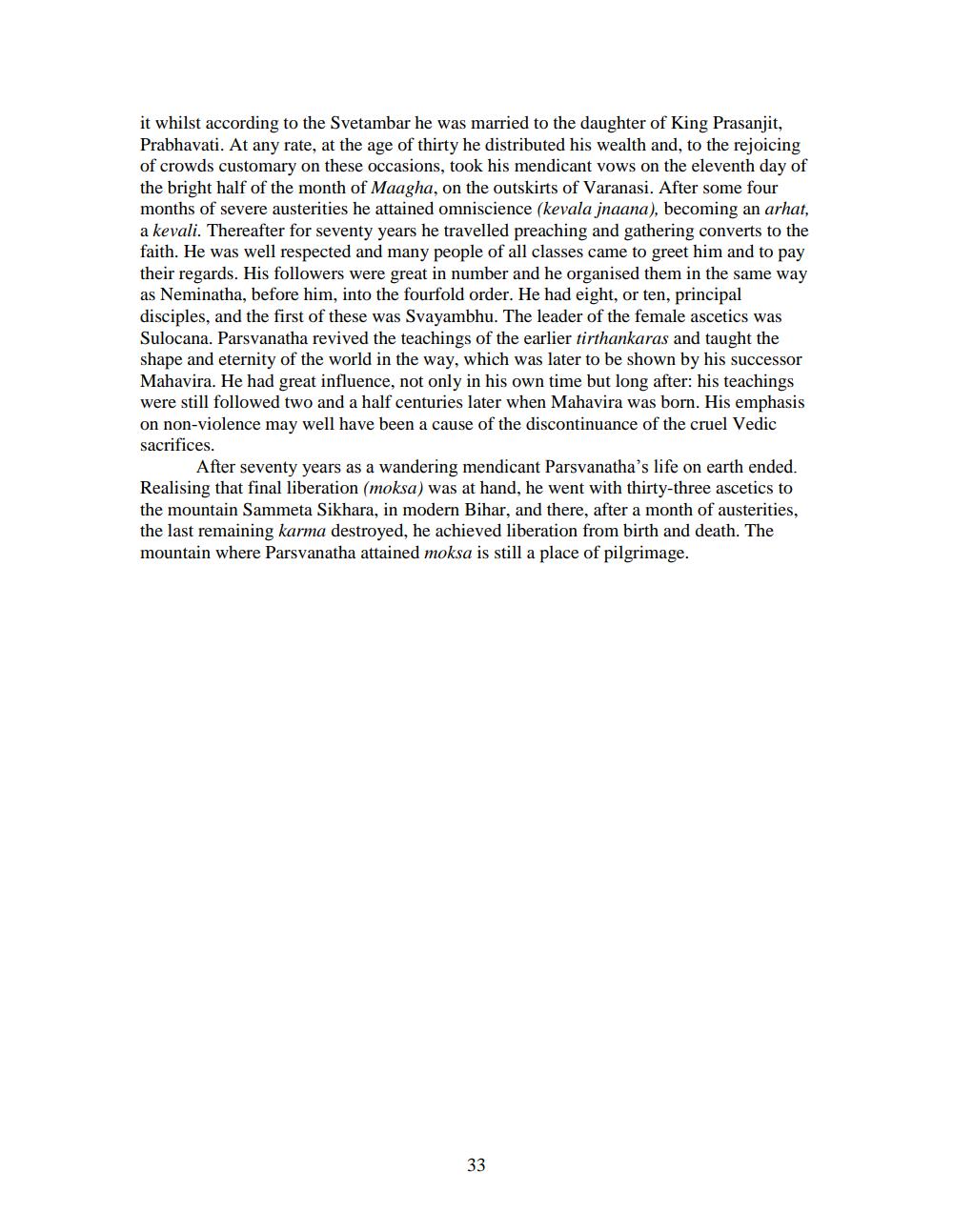________________
it whilst according to the Svetambar he was married to the daughter of King Prasanjit, Prabhavati. At any rate, at the age of thirty he distributed his wealth and, to the rejoicing of crowds customary on these occasions, took his mendicant vows on the eleventh day of the bright half of the month of Maagha, on the outskirts of Varanasi. After some four months of severe austerities he attained omniscience (kevala jnaana), becoming an arhat, a kevali. Thereafter for seventy years he travelled preaching and gathering converts to the faith. He was well respected and many people of all classes came to greet him and to pay their regards. His followers were great in number and he organised them in the same way as Neminatha, before him, into the fourfold order. He had eight, or ten, principal disciples, and the first of these was Svayambhu. The leader of the female ascetics was Sulocana. Parsvanatha revived the teachings of the earlier tirthankaras and taught the shape and eternity of the world in the way, which was later to be shown by his successor Mahavira. He had great influence, not only in his own time but long after his teachings were still followed two and a half centuries later when Mahavira was born. His emphasis on non-violence may well have been a cause of the discontinuance of the cruel Vedic sacrifices.
After seventy years as a wandering mendicant Parsvanatha's life on earth ended. Realising that final liberation (moksa) was at hand, he went with thirty-three ascetics to the mountain Sammeta Sikhara, in modern Bihar, and there, after a month of austerities, the last remaining karma destroyed, he achieved liberation from birth and death. The mountain where Parsvanatha attained moksa is still a place of pilgrimage.




